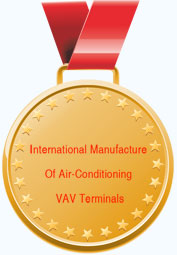High Costs Linked to Gaps Around Air-Conditioners
【2011-6-13】
After embracing environmentally friendly construction, Martin Dunn, a developer of affordable housing in the city, made a frustrating discovery: the energy that he hoped to save with improved insulation and efficient boilers was being siphoned off through gaps around the air-conditioners in apartment windows.
The warm air was escaping, substantially raising his utility bills. “It defeats the purpose of all the other improvements you’ve done,” he said.
And it was not just the heated air that was escaping: in the summertime, the gaps around units that did not fit tightly were letting out refrigerated air.
The scope of the problem is outlined in a report to be released on Thursday by the Urban Green Council. The report, titled “There Are Holes in Our City’s Walls,” estimates that poorly fitted air-conditioners cost buildings in New York City $130 million to $180 million a year in extra fuel consumption, which in turn is linked to an extra 375,000 to 525,000 tons of carbon dioxide emissions.
While the report covers only New York City buildings, the problem extends across the nation, said Russell Unger, executive director of the Urban Green Council, the New York affiliate of the United States Green Building Council. (The national council is best known for bestowing the LEED seal of approval on environmentally friendly buildings.)
And while the heat loss matters more in areas with long winters like the Northeast, Mr. Unger said, cool air also leaks out when the units are in use in hot weather, resulting in higher electricity costs.
“This is something under everyone’s noses, and it’s totally overlooked,” he said. “It’s an issue in every building that doesn’t have central air.”
The report is based on tests by Steven Winter Associates, a building-design consulting firm, on three types of units commonly used in the city: the window-mounted air-conditioner that is a fixture of prewar buildings; the air-conditioner that sits in a metal sleeve in the wall; and a packaged-terminal air-conditioner that protrudes into the room and is usually permanently installed at the time of construction.
In all 11 buildings tested in the city, building engineers found that each poorly fitted and poorly sealed unit left a gap equivalent to a hole roughly 2 inches by 3 inches — “about the size of your fist if you punched a hole in the wall,” as Mr. Unger put it.
In some buildings, the report said, the cost of fuel lost to such energy waste is equal to the total cost of cooling the building alone.
The report recommends both immediate and long-term steps to deal with the problem, including building-wide programs to remove and store the window-mounted units and the manufacturing of improved installation kits for all units.
The sleeve models are supposed to stay in place year-round, but they can be winterized to plug holes, the report says. It also counsels against a common practice by many residents: buying cheaper window units instead of the appropriate models to fit into the existing metal sleeves, ensuring a bad fit.
Getting residents to remove window-mounted air-conditioners when they are not in use is a daunting challenge, the report says. One reason is the expense: residents of high-rise buildings are often required to hire professional help to remove and reinstall the units as a safety precaution. Another is lack of storage space, the report noted.
Daniel Dubno, a tenant of a three-bedroom apartment on the Upper West Side with five window units that have become permanent fixtures, can think of another reason.
“Every year, I spend hours trying to get someone to come to get these things taken out, stored and cleaned,” said Mr. Dubno, 51, a producer of technology events. “You talk to a bunch of people, you find a reputable company, and then you find out that these guys are just too busy and you can’t get on their schedule.”
“This summer, I carried an 80-pound air-conditioner downstairs and washed it on the street,” he added. “People thought I was crazy.”
Mr. Dunn, whose real estate company, Dunn Development Corporation, has 14 buildings in the city, with 1,115 units, said some of his tenants had refused to have their air-conditioners removed during the cold season, even when his buildings provided the service at no charge.
“In some buildings, we want them to put the units in a closet and make space for them, but some tenants don’t cooperate,” he said.
Mr. Dunn said he was experimenting with other solutions, too, including new types of windows and rigid covers for the air-conditioners that remain in place.
John H. Slattery, a real estate agent who is treasurer of his Upper East Side co-op building, said that he paid to remove his air-conditioners in the fall but that it had nothing to do with saving energy.
“I take them out because they’re ugly, and they rob me of light,” he said.
At the same time, Mr. Slattery considers the twice-yearly removal and reinstallation “a nuisance.”
What if, he said, “an installation goes wrong, and it falls out the window and kills someone?”


















